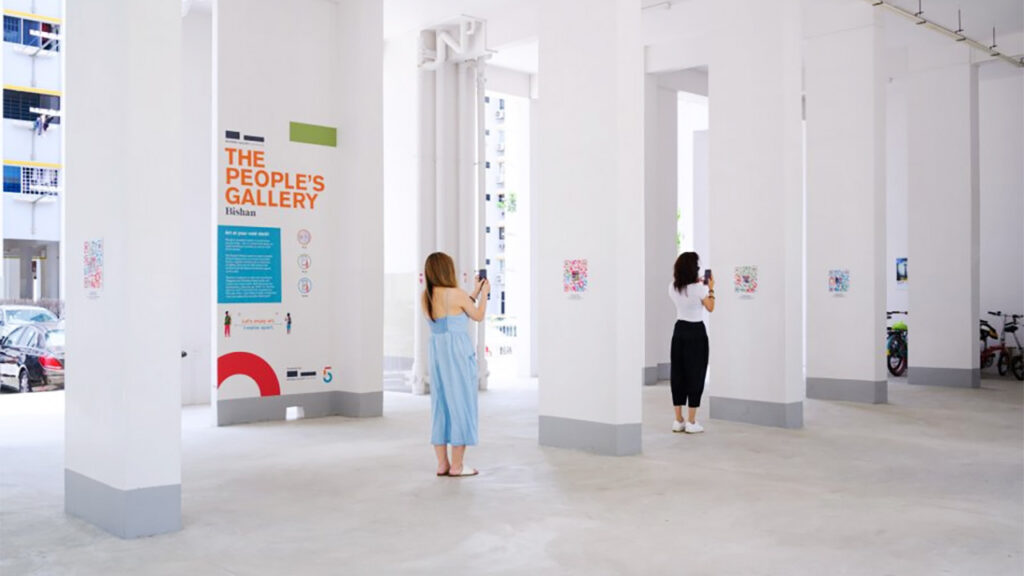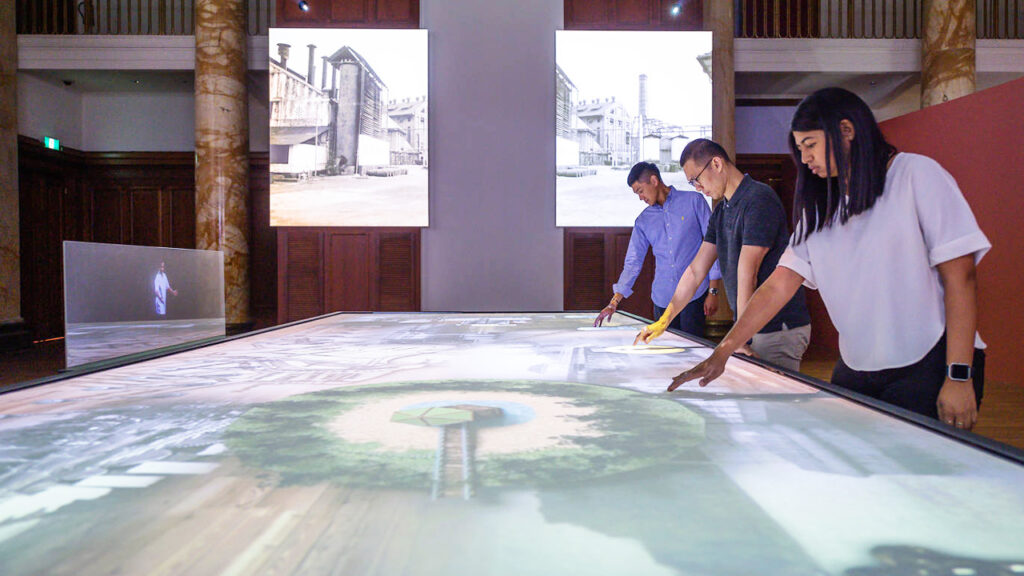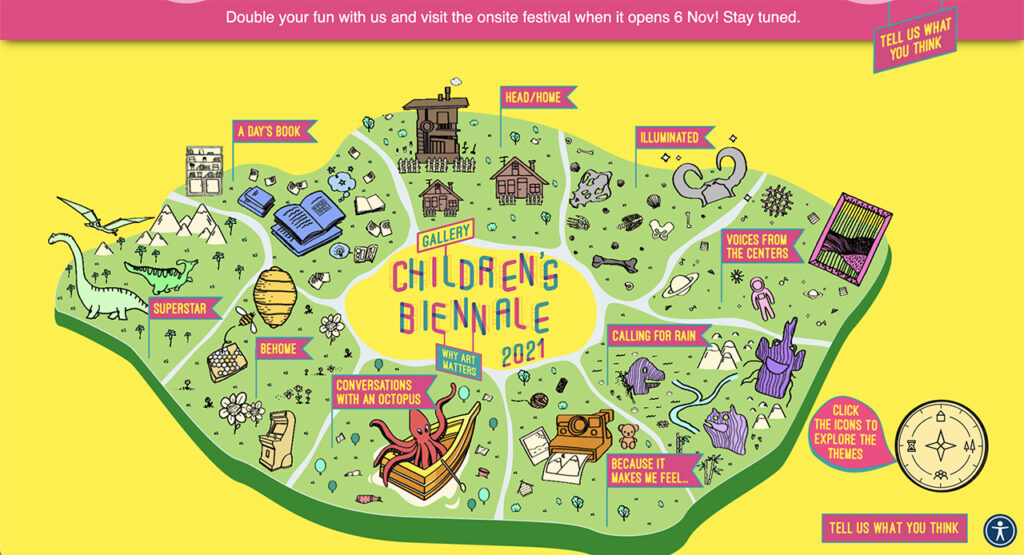If the past 18 months’ worth of pandemic-related constraints have proven anything to the cultural sphere, it’s that museums have legs beyond their physical spaces. For one, the National Gallery Singapore (NGS), which houses the world’s largest collection of Singapore and Southeast Asian art, uncovered new digital latitude when it unveiled #GalleryAnywhere early last year, offering a one-stop platform for its virtual content from online exhibitions to videos to educational materials.
While maintaining a connection with its audience over Singapore’s circuit breaker (by August 2020, NGS saw membership sign-ups soar to some 150,000), the initiative additionally shifted the museum’s approach to its physical and digital offerings. “It motivated us to always think about digital extensions,” Chris Lee, NGS’ Assistant Chief Executive, tells Jing Culture & Commerce. “Even when we have a physical exhibition, how do we continue to offer content online that audiences can engage with before coming to the museum or after leaving the exhibit?”

#GalleryAnywhere offered online visitors access to National Gallery Singapore’s virtual content, including videos, podcasts, its Collections portal, and the online-only exhibition, Stories In Light. Image: National Gallery Singapore
No doubt, that thinking frames NGS’ recent hybrid events like Gallery Children’s Biennale, as well as its latest project, The People’s Gallery. Until November, local visitors to 27 void decks — communal spaces located on the ground floors of Singapore’s public housing blocks — scattered across the island will find QR codes that they can scan with their smartphones to unlock and display Southeast Asian artworks in augmented reality via an interactive microsite.
“Bringing art to the heartlands” is the obvious headline, but too, the exhibition demonstrates the museum’s ambition to grow its footprint beyond its geographical location. Or as Lee puts it, “We said, ‘Hey, why only bring people into the building? If we really want to make a stand, let’s go out.’”

The People’s Gallery has fitted 27 void decks across Singapore with 10 QR codes each, which can be scanned to unlock artworks in AR. Image: National Gallery Singapore
Even within the walls of NGS, Lee has been behind the push to make the museum more “accessible, welcoming, and not intimidating.” That’s taken the form of digital touchpoints such as a chatbot, mobile app, and even a robot guide that enhance visitor engagement, plus an innovation incubator, Y-Lab, that’s consistently seeking out ways for technology to enrich the art and museum experience. But amid these developments, Lee’s not lost sight of what they’re truly for: a #SmartMuseum may be in NGS’ view, but so is being a “people’s museum,” he emphasizes.
Lee is set to join the upcoming MCN Virtual 2021 conference, as part of the panel, “Exploring Digital Horizons With Asia’s Cultural Institutions,” on October 6. Co-presented by Jing Culture & Commerce, the discussion will explore how museums in Asia-Pacific are viewing digital today and vitally, how they’re planning for a digital future. Before that, he shares more below about how NGS has been innovating to better serve its audience.
What’s your personal mission as Assistant Chief Executive at NGS?
Basically, it is to look at the visitor experience from an end-to-end perspective. What might happen with most organizations is that a visitor might experience the museum in different ways before they come into the building, when they are in the building, and after they leave. One of my missions has been to construct the process, to engage with our visitors in a much more connected, seamless way. Because a lot of that connection with the visitors is through digital touchpoints, we need to keep upgrading and improving, and applying a user-centric approach to doing that.

NGS’ 2019 exhibition, City Hall: If Walls Could Talk, featured immersive and interactive elements that illustrated the City Hall building’s rich history. Image: National Gallery Singapore
NGS has been an early adopter of digital innovations from smartphone apps to multimedia exhibitions. How has COVID transformed the way the museum considers digital?
The simplest way to put it is that COVID accelerated everything. We were already working on digital being a complementary, supporting enabler to the museum experience, but it tended previously to be driven by a few functions within the museum. But with COVID, I think that’s changed the mentality quite a bit across the organization — not just within those functions that are more used to digital or advanced in digital, but even the curatorial and programming teams are very much aware and responding to the need to connect with audiences.
How have audiences responded to #GalleryAnywhere?
We had really good feedback just by making everything available online and even with simple things like downloadable activity sheets. The trick is also to keep it fresh and keep it moving. People are much more impatient online. That taught us a lot of lessons in terms of content format, frequency of changes, and how we laid out when the doors were opened.

The currently ongoing Gallery Children’s Biennale is a hybrid offering, with its online platform now accessible and packed with multimedia activities to keep kids engaged with art. Image: National Gallery Singapore
Could you elaborate on NGS’ thinking behind its smart museum push?
I worked very closely with Kevin [Lim, NGS’ Deputy Director of Digital Innovation & Transformation] and the smart museum is a vision that we created together, again before COVID. We really wanted to be thoughtful about being apart from the buzzwords of smart vision, smart nation, smart buildings, smart museum. What does a smart museum mean? Early on, we said that we don’t want to be a museum that adopts technology in a gimmicky way just for the sake of adopting technology. We want to really harness technology to enhance the connection between artists and our audiences.
Might that thinking translate to your internal systems too?
We are looking at how we can have the right software and tools to help our own workforce be efficient and productive, whether that is with AI [artificial intelligence] assistance for scheduling meetings or to route inquiries to our sales teams. Obviously, we’re continuing to upgrade our systems internally, one of the big things being a content management system that helps us to load all our artworks and be able to access and tag it easily.
How does NGS intend to continue elevating the visitor experience?
[One] area is to continue to innovate the museum experience through things like new digital touchpoints. In a few months time, we’ll be decentralizing ticketing. So any way you come in, you can buy a ticket on your mobile, at a kiosk, or a pass dispenser. You can even have a QR code that you navigate around the building with.
We will be also providing a progressive web app where you don’t have to download [NGS’ Gallery Explorer] app, but just by scanning a QR code, it will take you to an app that helps with itinerary planning, wayfinding, and even creating your own Spotify playlist as you navigate the museum. We’re also getting into AI to help recommend related experiences. We’re looking into all these areas, but all of it has to be genuinely connected to the art experience or the museum experience.



